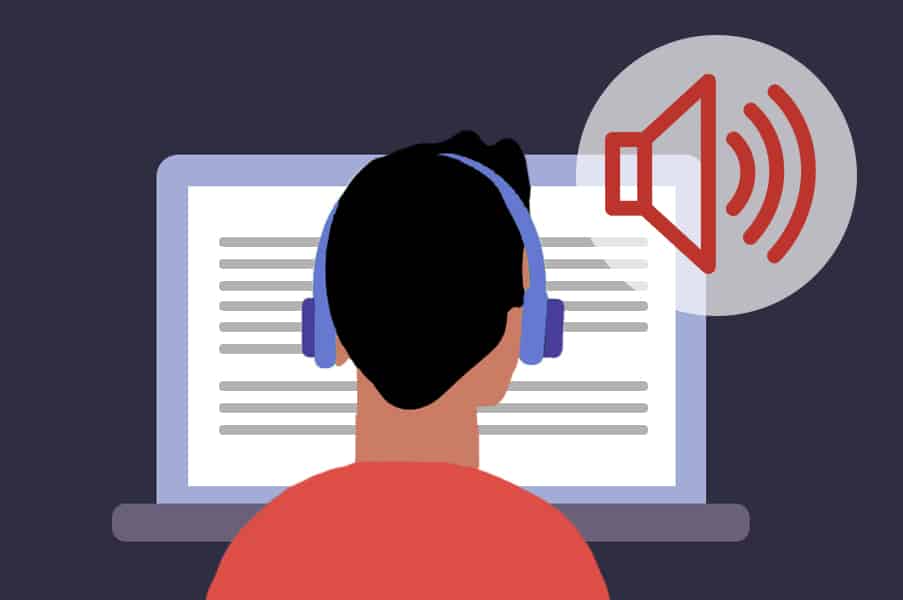
Accessibility on Social Media
When it comes to marketing and nonprofit brand presence in digital spaces, it is imperative that content and messaging are available and accessible to all audiences—including those who rely on inclusive technology like screen readers, text-to-speech programs, and/or captioning to engage with digital content. The World Health Organization estimates 2.2 billion people worldwide have some form of vision impairment, while roughly 466 million people globally are deaf or have permanent hearing loss. Accessible technology also helps those with more temporary impairments, such as visual impairment from a migraine, as well as situational impairment, like being in a loud room or working in bright sunlight. It is not only unethical and ignorant to leave these audiences behind, but it’s bad for your nonprofit’s brand affinity and reach. Accessible content shows that your nonprofit cares about your supporters and will allow you to reach more of them.
In this blog, we will explore why accessibility is important as well as social media accessibility best practices. While this is not an exhaustive list, leaning into these tactics will help your nonprofit do better and ensure no user is left behind. This work is never done, and there are always new technologies, platform features, and communities of people that help evolve this work. We hope these best practices can help your nonprofit build an inclusive and accessible community that all people can engage with.
Why Accessibility is Important
While inclusive and accessible marketing is the right thing to do from an ethical standpoint, it also has a business benefit.
When you provide all audiences with an equal experience by using accessibility best practices, your content has the opportunity to reach and engage more people. It also demonstrates that you care about your communities and are striving to keep everyone included in your content and conversations—all of which can translate into improved perception and affinity.
In addition to making good business sense, accessible content may also keep your nonprofit in legal compliance. The Americans with Disabilities Act (ADA) prohibits discrimination based on disability and, in 2019, it was ruled by the U.S. 9th Circuit Court of Appeals that this can apply to digital spaces as well.
Whether you’re just starting or continuing your journey of creating accessible social media content, the road ahead doesn’t have to be daunting. In fact, many best practices can be incorporated into how the content itself is written, with additional support coming from technology and features already built into social media platforms and publishing tools. Below, we’ll share some tips and recommendations for ensuring your content, and your nonprofit, are accessible and inclusive for everyone.
Social Media Accessibility Best Practices
- Use descriptive links instead of saying “click here” when hyperlinking text.
- Always use #CamelCase for hashtags and social media handles, which capitalizes the first letter of each word.
- This means instead of typing #welcomehome, you type #WelcomeHome, and instead of @mediacause, you type @MediaCause.
- Screen readers identify different words with capitalization
- Write in plain language that users of all audiences and cognitive abilities can comprehend.
- Use disability-inclusive words, descriptions, etc. that are outlined by expert organizations, such as the United Nations Disability Inclusion Strategy.
- Do not use complicated formatting, such as a lot of line breaks or spaces. This can be difficult for assistive technologies to translate appropriately.
- Use emojis sparingly. When translated through a screen reader, meta descriptions can complicate the message. Explore Emojipedia to understand the meta description of each emoji.
- Add emojis at the end of your copy to avoid complicating your message and to keep the most relevant information at the forefront.
- Use alternative text (or alt text) in your images. Here are resources on how to add alt text for Facebook, Twitter, Instagram, and LinkedIn. Publishing tools, like Sprout Social, also have built-in features for adding alt text.
- Refrain from using graphics that are text-heavy, as screen readers likely won’t pick up on the text accurately.
- Bonus tip: create private social media accounts to test draft content before publishing. This helps you identify and address any content issues before posts go live from your nonprofit’s account.
Social media accessibility and technology are continuously evolving. While the tips above are a great start, we encourage you to continue educating your social media teams on how to achieve even greater accessibility and inclusivity. For more information and further resources, visit Accessible Social.
For more social media tips, download our free resource, Tips for Nonprofits on Social Media.
Our team is always available to help with your social media strategy—contact us today to get started.